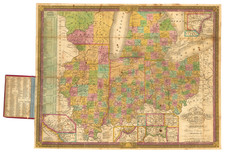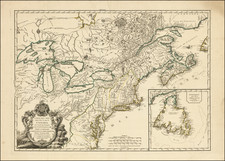A compelling portrayal of America's flourishing heartland, this early 20th century diagram map provides a robust visual narrative of the industrial and agricultural vitality nurtured by the Rock Island-Frisco Lines and Chicago & Eastern Illinois Railroad.
Emerging from a dynamic period in American history, this document serves as an artifact of an era when railroad expansion was reshaping the economic and physical landscape of the United States. As the 19th century made way for the 20th, the railroads were instrumental in knitting together disparate regions into a cohesive national market, fostering the development and exchange of commodities. This particular map, published circa 1906 or 1907, focuses on the rich bounty reaped from the territories traversed by these railroads, highlighting the production of varied agricultural goods like cotton, oats, barley, cattle, and swine, as well as natural resources such as oil, natural gas, and bituminous coal.
The central map, carefully illustrating the lines and subsidiaries of the railroads, affirms their pervasive influence, cutting across multiple prosperous states, and forming the backbone of the nation's economic infrastructure. Simultaneously, the surrounding thematic maps weave a detailed tapestry of the region's prodigious output, creating a persuasive argument about the region's economic advantages.
Factors of Prosperity in the Rock Island-Frisco States of America is not only a map; it is a story that invites its readers into a deeper exploration of the forces behind America's rapid economic development. It underscores the intertwined narrative of progress, industry, agriculture, and infrastructure, in the richest and most prosperous section of the United States. Through the meticulous graphical representation, one may glimpse the optimistic ethos of the time—a celebration of progress, prosperity, and the promise of a flourishing future.











![[Eastern Sheet -- Ohio] Post Road Map of the States of Ohio and Indiana with Adjacent Parts of Pennsylvania Michigan Illinois Kentucky and West Virginia Showing Post Offices With The Intermediate Distances and Mail Routes In Operation On the !st of February 1885 . . .](https://storage.googleapis.com/raremaps/img/small/44153.jpg)




